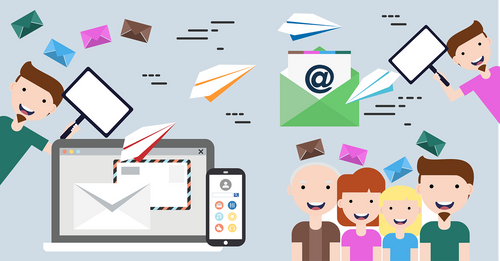Email marketing is a powerful tool to engage your audience, but it can be ineffective if your email list is not properly maintained. Cleaning your email list ensures that you are sending emails to active subscribers, which results in higher open rates, click-through rates, and conversions. In this guide, we will walk you through the process of cleaning your email list and reducing your bounce rate.
Why Is It Important to Clean Your Email List?
Cleaning your email list is crucial to maintaining the health of your email campaigns. An outdated and unclean email list can result in a high bounce rate, which means your emails are not reaching your subscribers' inboxes. This, in turn, can negatively affect your sender reputation and deliverability, leading to a decline in your email marketing performance.
How to Clean Your Email List?
Cleaning your email list is an essential part of maintaining a high deliverability rate and keeping your bounce rate low. The best way to do this is to verify emails with data verification services, remove any duplicates or invalid addresses, and segment your list into smaller lists based on preferences.
Additionally, it's important to ask subscribers to update their email addresses, preferences, and other relevant information. This ensures that you have the most accurate and up-to-date information on your subscribers.
Cleaning your email list involves the following steps:
Step 1: Identify Inactive Subscribers
Start by identifying inactive subscribers who have not engaged with your emails in a long time. You can segment your email list based on engagement metrics such as opens, clicks, and conversions. Remove subscribers who have not engaged with your emails in the last 6-12 months.
Step 2: Remove Duplicates
Remove duplicate email addresses from your email list. Duplicates can skew your metrics and negatively impact your email marketing performance.
Step 3: Verify Email Addresses
Verify the email addresses in your email list to ensure they are valid and active. Use an email verification service to remove invalid and non-existent email addresses from your list.
Step 4: Remove Hard Bounces
Remove email addresses that have hard bounced. Hard bounces occur when an email is returned because the email address is invalid, non-existent, or blocked.
Step 5: Ask Subscribers to Update Their Information
Ask subscribers to update their email addresses, preferences, and other relevant information. This ensures that you have the most accurate and up-to-date information on your subscribers.
Asking subscribers to update their email addresses, preferences, and other relevant information can help you keep your list clean and reduce bounce rate. Not only will you be able to get more of your messages to the right people, but you can also ensure that your messages are tailored to the interests of each subscriber. You may also find that updating a subscriber's information helps increase engagement with your emails as they are personalized for each person.
How to Reduce Your Bounce Rate?
Reducing your bounce rate is essential to maintaining the health of your email list. Reducing your email marketing bounce rate is important for several reasons. Having a high bounce rate can indicate to email providers that you are sending spam. This can lead to your emails getting blocked or sent to the spam folder. Additionally, having a low bounce rate increases the effectiveness of your email campaigns, as more of your messages will reach the people you are trying to reach.
Here are some tips to help you reduce your bounce rate:
Tip 1: Use a Double Opt-In
Use a double opt-in to confirm that subscribers want to receive your emails. This ensures that you are sending emails to engaged subscribers who have confirmed their interest in your content.
Tip 2: Send Targeted and Relevant Emails
Send targeted and relevant emails to your subscribers based on their interests, preferences, and behavior. This ensures that your emails are more likely to be opened and engaged with, reducing the risk of bouncing.
Tip 3: Use a Reputable Email Service Provider
Use a reputable email service provider that has a good sender reputation. This ensures that your emails are more likely to be delivered to your subscribers' inboxes and less likely to bounce.
Conclusion
Cleaning your email list and reducing your bounce rate are essential to maintaining the health of your email marketing campaigns. By following the steps outlined in this guide, you can ensure that your emails are reaching engaged subscribers who are more likely to open, click, and convert. Remember, a clean and engaged email list is the key to a successful email marketing campaign.



